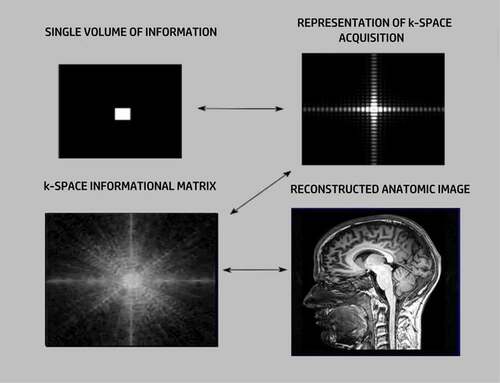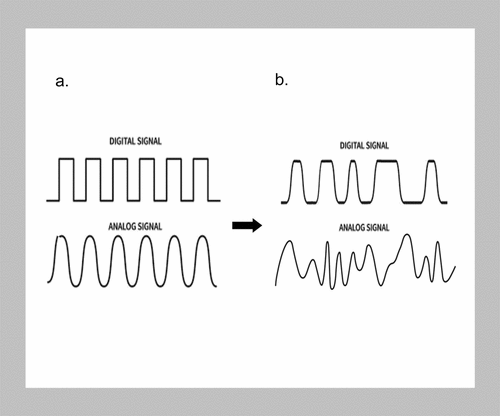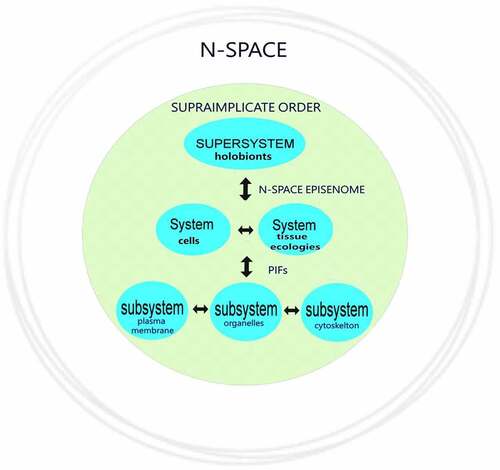Figures & data
Figure 1. Image formation in k-space.
In an MRI acquisition, all points within the field of view have a corresponding representation in holographic k-space informational architecture. Each volume of information results in a unique k-space partition representing a combination of frequency and phase encoding that also fills the entire k-space informational matrix. In k-space, information obtained along orthogonal axes permits spatial dimensionality, which can be transformed into a biological image. This same holographic process has been applied to a new understanding of morphogenesis and cellular developmental patterning.

Figure 2. Digital versus analog information systems.
a) The digital waveform is typically depicted as a stepped or discrete square wave meant to denote its binary “bit” character, considered representative of the instantaneous settlement of electronic states or laboratory assessment of the settlement of quantum entanglements. An analog waveform is alternatively shown as a smooth continuous sinusoidal wave as harmonic averaging.
b) Entanglements in separate quantum reference frames lose their exclusively binary character, depicted by non-orthogonal waveforms. This slight skewing represents informational offsets as uncertainties, asymmetries, and inter-observer differences. In living systems, “analog” waves are characterized by ambiguities with varying amplitudes and slope profiles representing entailments as memory and self-referential inference.

Figure 3. The reiterating system of systems/Markov blankets within living systems.
Subsystems of intracellular structures and the plasma membrane permit intracellular informational management as individualized pervasive information fields (PIFs) and localized tissue ecologies as coalescent Markov blankets at the systems levels. These combine at the supersystem level as the relevant cellular N-space episenome, as reiterating supersystem Markov blankets that represent the informational platform for coherent shared cellular information of environmental information and serving as a heritable template for morphogenesis and developmental patterning. Supersystem N-space episenomes (holobionts) experience a supraimplicate order that engages surpacellular consciousness, permitting collective cognition in confrontation with environmental stresses.

